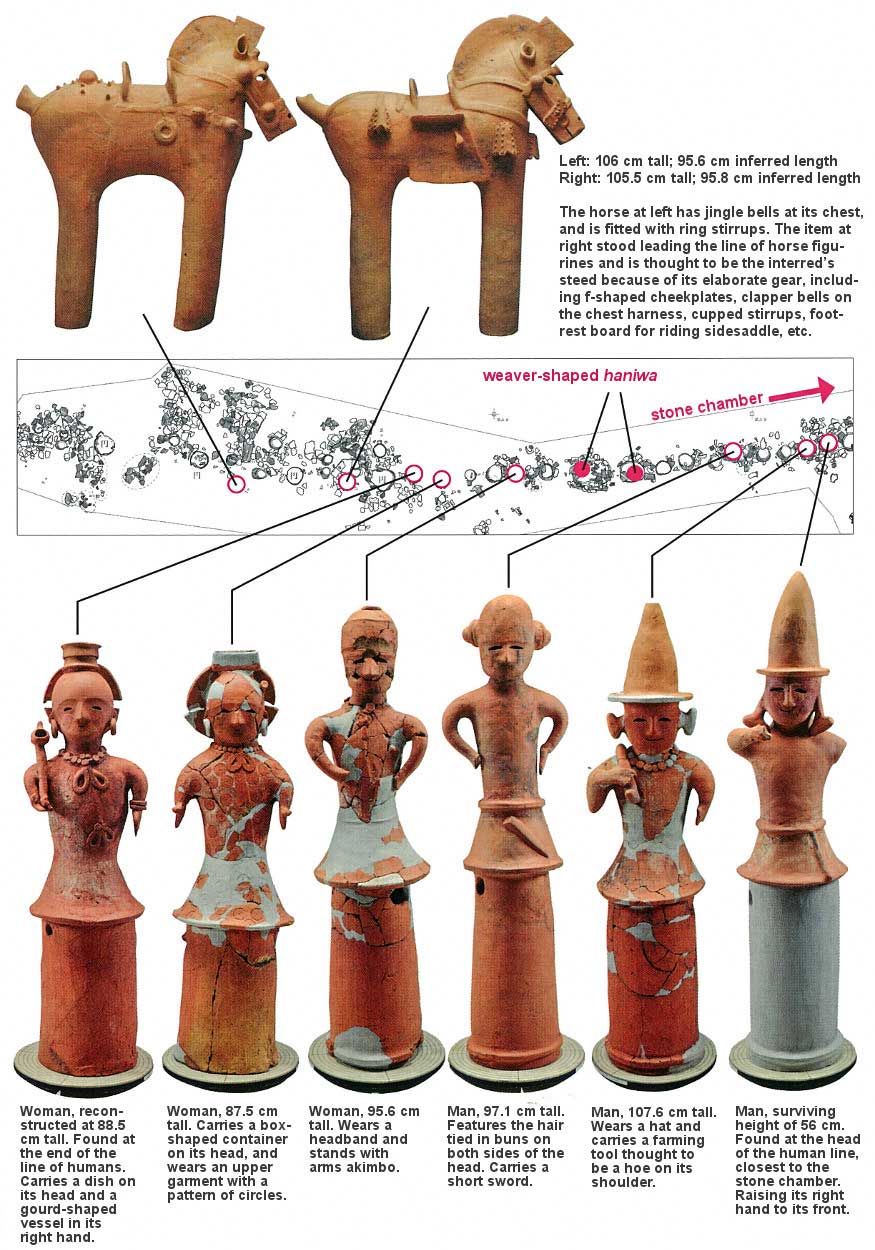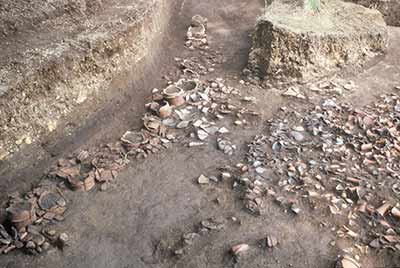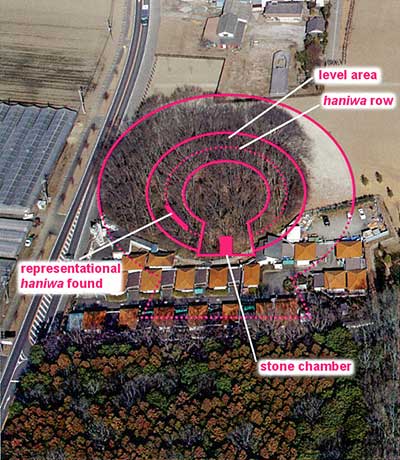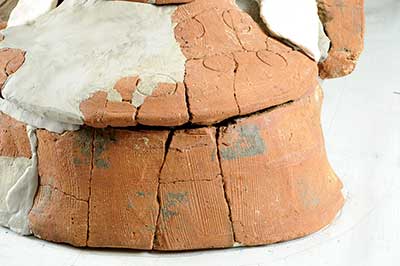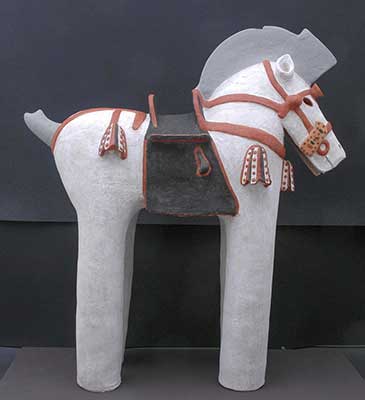Kabutozuka:
A nationwide first! From a large-scale tomb in ancient Shimotsuke province, two haniwa depicting women weaving cloth are recovered.
Kabutozuka Tomb,
Shimotsuke City, Tochigi Prefecture
Late Kofun period (latter half, sixth century)
A circularly arranged group of haniwa
The Kabutozuka tomb sits on a fertile tableland running alongside three rivers, located in the city of Shimotsuke in the southern portion of Tochigi prefecture. In this area, large-scale tombs were continuously built in the Late Kofun period (latter half of the sixth century) in a scallop shell shape unique to this region, known as the Shimotsuke-type tomb. Also, in the subsequent ritsuryō period (latter half of the seventh–tenth centuries), this area flourished as the nucleus of the ancient province of Shimotsuke, where the provincial headquarters, monastery, nunnery and so forth were constructed.
In recent years, when excavation was conducted in conjunction with preparations of the adjacent remains of the provincial monastery, Shimotsuke Kokubunji (a Historic Site), it was learned that the Kabutozuka tomb is a scallop-shell-shaped keyhole mound on a scale of 80 m in overall length, and from the recovered artifacts, that it was built in the Late Kofun period. Also, there is a terrace about 14 m wide on the tomb (atop the first tier), at the middle of which cylindrical haniwa were lined up single file encircling the mound. Further, on the western side of the mound, representational haniwa in the shapes of horses and humans were ascertained as having stood in the line. There were 24 figurines in all that could be reconstructed, and not only could their condition of alignment be confirmed, based on the pigment surviving in scant amounts on the recovered sherds, it was learned they were painted in the four colors of red, white, black, and gray.
The first weaver-shaped haniwa recovered nationwide
Of the 24 representational haniwa, two items were depictions of women weaving cloth. The recovery of such weaver-shaped haniwa is the first example for all of Japan. Also, as each gave form to a different type of loom, it is seen that there were already structurally differing looms by around the latter half of the sixth century.
While there are several theories as to the reason for placing groups of haniwa on tombs, in the case of the Kabutozuka tomb a large amount of pottery was recovered in front of the line of haniwa, and it is inferred that some kind of activity (perhaps ritual) was conducted in front of these items. Reasons for the recovery of weaver-shaped haniwa are unclear in the details, but in the ancient chronicle Kojiki there are descriptions of weaving on looms as a sacred act, and it may be said that perhaps the person interred at the Kabutozuka tomb carried out some role related to weaving. (Kimura Tomonori)
Haniwa in the shapes of humans and horses line up in a circle around the stone chamber
